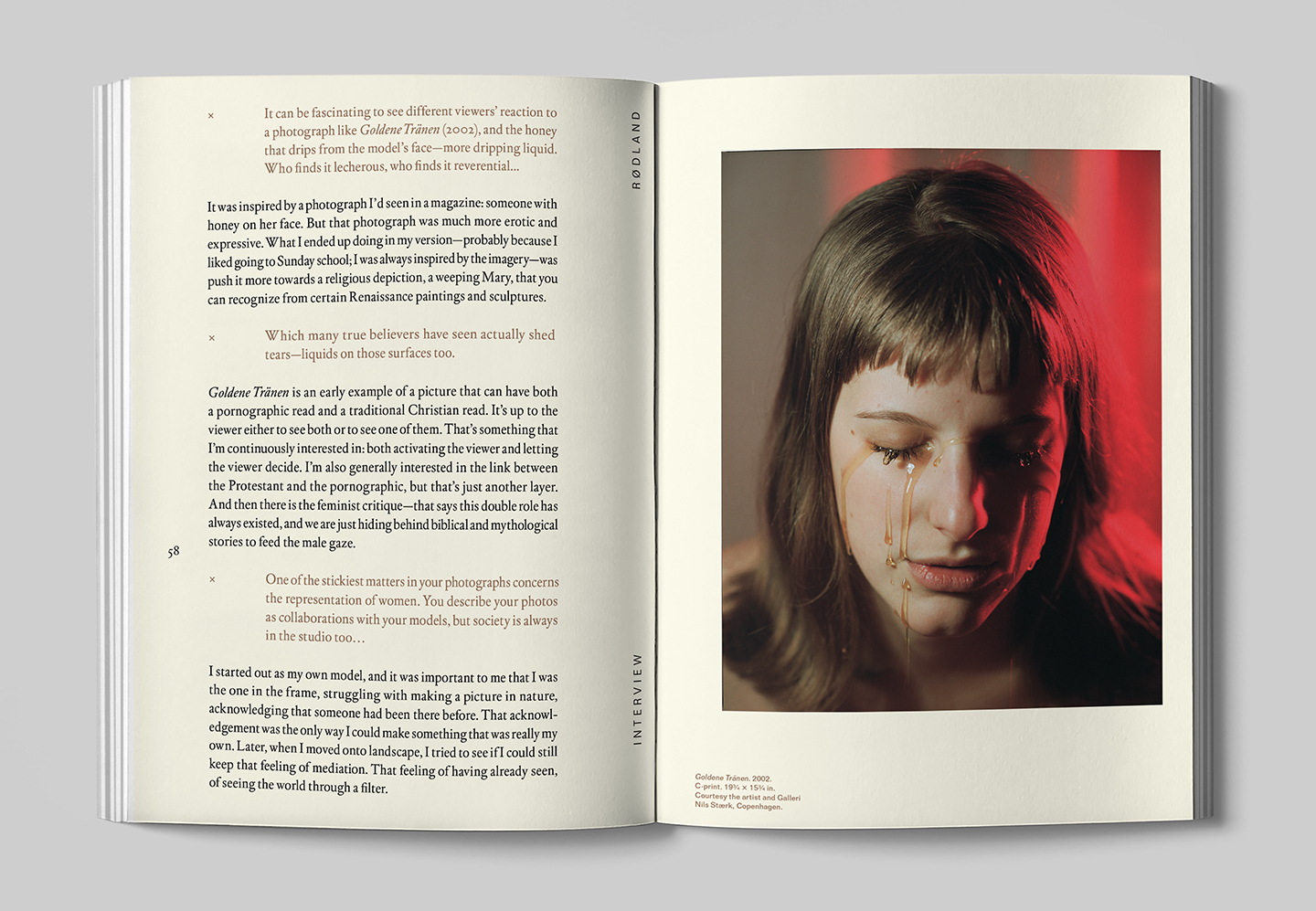An interview with Torbjørn Rødland

You don’t use Instagram as seriously as Stephen Shore or Wolfgang Tillmans do, but you have an account, and don’t seem to dismiss it.
It’s one mainstream way where photography is being talked about and categorized. And for that reason, it’s endlessly fascinating to me. I also think that because I’m OK with not staying cleanly in a safe white space, I should participate in it, to learn. To investigate the edges of it. The limitations of it. And the possibilities. Because so many of the changing mentalities to visual material are apparent really quickly.
What astounds me about the generation younger than mine, the generation that grew up on social media, is that for them, photographic truth is back. “Pics or it didn’t happen.” Whereas I grew up being taught, to put it vulgarly, that all images were a lie.
I see a parallel between my project and that change, because I was taught the same thing as you: that everything is a construct, that there’s no reality in a photograph. But of course that’s part of the 20th-century tradition of rejecting whatever came before. The balanced truth is that there is an aspect of photography that is before language, that is close to the act of seeing. There is a physical, indexical closeness between the image and what was in front of the camera.
Susan Sontag’s last book, Regarding the Pain of Others (2003), was about this. She rolls back On Photography and says that she went too far in dismissing the truth value of documentary imagery.
But neither should be the only reading. Looking just has to be balanced with a critical understanding that incorporates institutional manipulation and Photoshop and everything else, so that looking becomes much more layered. Because people are desperate to be moved, desperate to be spoken to. And what’s lacking in that critical project is that there’s no human content in the photograph anymore if everything is just a construction.